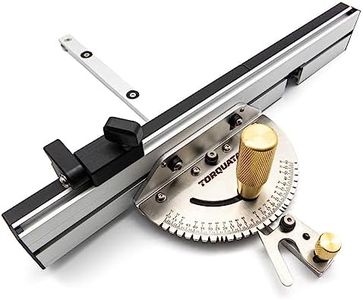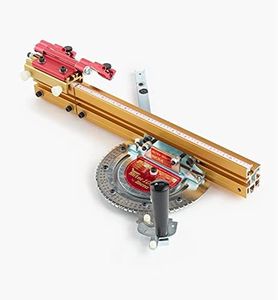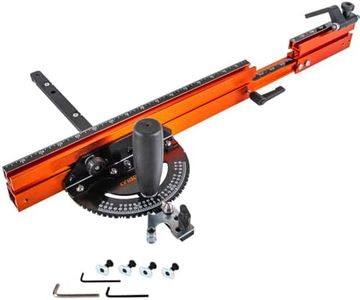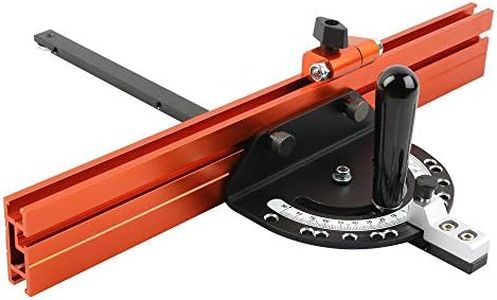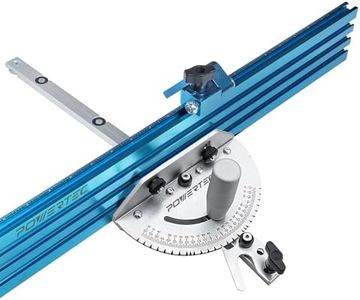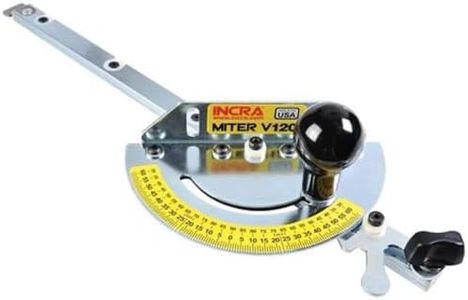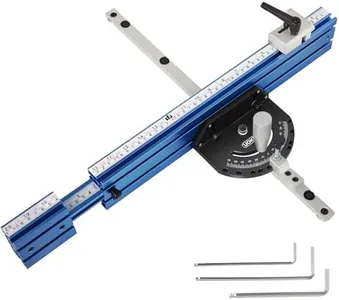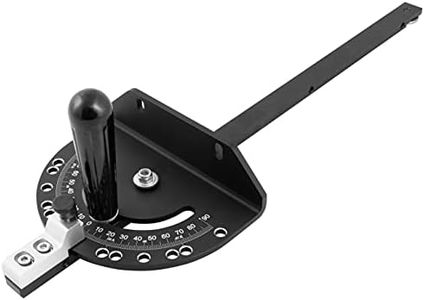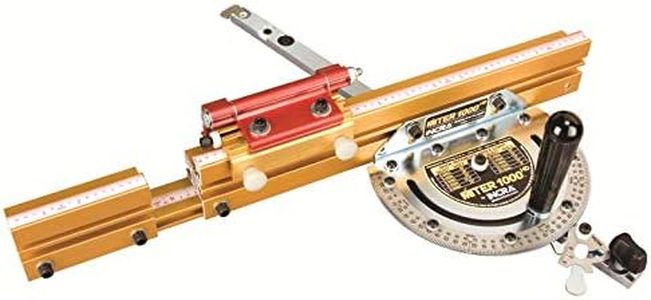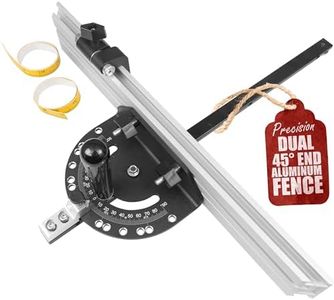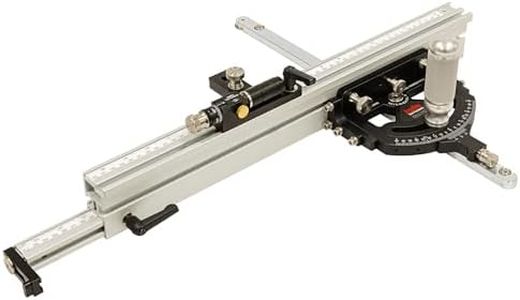We Use CookiesWe use cookies to enhance the security, performance,
functionality and for analytical and promotional activities. By continuing to browse this site you
are agreeing to our privacy policy
10 Best Miter Gauges
From leading brands and best sellers available on the web.Buying Guide for the Best Miter Gauges
Choosing the right miter gauge for your table saw or woodworking tool is important for getting accurate and safe cuts. A miter gauge helps you set and maintain precise angles when cutting wood, and a well-chosen model makes your work easier, faster, and more reliable. To get the best fit for your needs, it's important to understand the main features and how they affect performance.Angle RangeThe angle range tells you how far the miter gauge can be tilted left and right. This is important because it decides how versatile the miter gauge is for making angled cuts. Most gauges cover at least 0 to 60 degrees in both directions, but if you do a lot of specialized cuts, you might want an even wider range. If you mostly do 90-degree cuts with the occasional 45-degree angle, a basic range might be enough; but for more complex projects, a gauge that covers a broader angle will be more helpful.
Positive StopsPositive stops are predefined points where the miter gauge will lock into place at common angles like 0, 22.5, 30, 45, and 60 degrees. They make it easier and quicker to set the gauge without fuss, and they help ensure you’re cutting at the right angle. If you mostly cut common angles, having positive stops at these points makes your work much faster and reduces mistakes. If you do only simple cuts, a few stops are enough, while for varied or frequent angle changes, more stops may save time.
Bar Size and FitThe bar is the metal strip that slides into your table saw’s miter slot. Fit is crucial—too loose and the gauge will wobble; too tight and it won't slide smoothly. Most bars are 3/4-inch wide and 3/8-inch thick, but slight variations exist between tools. Some gauges offer adjustable bars for a custom fit. It’s important to check your table or saw’s slot size and look for a gauge that fits well. If you want smooth and accurate work, always choose a gauge that matches your tool’s miter slot exactly.
Fence Length and AdjustabilityThe fence is the part of the miter gauge that holds your wood steady as you cut. Longer fences support bigger pieces and make holding workpieces safer and easier. Some fences can be extended or adjusted for length. If you mostly cut small pieces, a short fence will work. For frequent cutting of longer or wider boards, or if you want more stability, pick a gauge with a longer or extendable fence.
Build Quality and MaterialsMiter gauges are usually made from aluminum, steel, or plastic. Build quality impacts both durability and accuracy. Heavier, metal constructions generally last longer and resist wear, while plastic options might be lighter but less sturdy. If you plan to use your gauge heavily or want higher accuracy, go with one made of strong metal. For occasional or lighter tasks, a basic model will do.
Ease of AdjustmentSome miter gauges offer knobs, levers, or digital displays that make angle setting easier or even allow for micro-adjustments. This feature is most important if you switch angles often or need precise cuts. If your work involves frequent changeovers, look for easy-to-adjust options. For mainly straightforward, repeated cuts, simpler mechanisms are fine.
